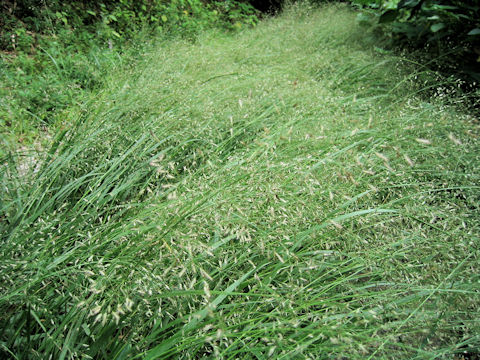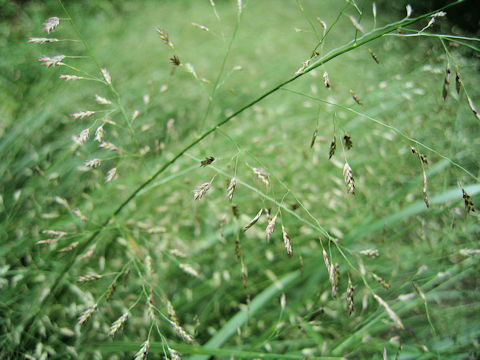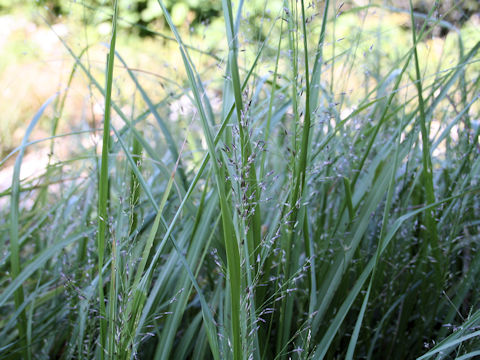
|
|
|
     |
|
|
|
íªÌ{B©çlAãB»êÉ©N¼âAq}ɪzµÄ¢Ü·Bȹâ¹[AnÈÇɶ¦A³ÍRO`UOZ`ÙÇÉÈèÜ·Bsͪ{©çÎãµÄ§¿ãªèA×·¢ü`Ìtªp¶µÜ·Bu¨¨Î±vƯ¶A¥Ý¯Éà¢GÅ·BW©çPO²ëAsÌæÌ~ÔÉAaçÉFðÑѽ¬äð¯ܷBbSA¨ibS^õ¬ðs¤A¨jÅ·B |
|
|
ClÈXYK®Ì½NÅAw¼Í Eragrostis ferrugineaBp¼Í èܹñB |
|
|
"Kaze-kusa" (Eragrostis ferruginea) belongs to Poaceae (the Grass family). It is a perennial herb that is distributed from Honshu to Shikoku, Kyushu in Japan, the Korean Peninsula, China, and the Himalayas. This herb grows on paths between rice fields, roadsides, grasslands, etc., and up to a height of about 30-60 cm. The stem rises diagonally from the root and crowds with elongated linear leaves. It is a "plantago"-like weed that is resistant to trampling. The sparsely purple spikelets are borne to the panicles at the tips of the stems from August to October. It is a C4 plant (Plants with C4-type photosynthesis). |
|
|
[ãEP`Q] åã{lësºc´uÓê ¢ÌXvÉÄA2004N0923úBeB [REº] ꧽê¬uìåRvÉÄA2005N0909úBeB |

|
|
Shu Suehiro |